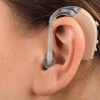Innovations in the medical industry to better understand diseases

Medical science has come a long way in the past few decades. In particular, our understanding of diseases has improved dramatically. This is partly due to innovations in the medical industry, such as new diagnostic techniques and treatments. We will discuss some of the most exciting recent developments in the medical field and how they are helping us better understand diseases.
Genetic Testing
One of the most important innovations in recent years is genetic testing. This allows us to identify the genes responsible for a particular disease. This knowledge can then be used to develop new treatments that target those genes.
In the past, most diseases were treated with a “one size fits all” approach. However, we now know that different people can have very different medication responses, depending on their genetics. By using genetic testing, we can tailor treatments to each individual, which should lead to better outcomes.
New Diagnostic Techniques
Another area of innovation in the medical field is diagnostic techniques. We now access better imaging technologies, such as MRI and PET scans. These allow us to get a more detailed look at the body and can often help us detect diseases earlier.
In addition, new blood tests can now screen for various conditions, including cancer. This means that we can catch diseases sooner and begin treatment before they have a chance to progress.
Spatial Biology to Better Understand Cancer
Spatial biology studies how cancer cells interact with each other and their environment. Understanding the spatial relationships between cancer cells allows us to develop new ways to treat this disease.
One example is “nanoparticle delivery,” which involves using tiny particles to deliver drugs directly to cancer cells. This approach is still in its early stages but shows promise as a more targeted way to treat cancer. In addition, it may be less harmful to healthy cells, which is a major problem with current cancer treatments.
Personalized Medicine
Personalized medicine is an emerging field that considers a person’s characteristics, such as their genes, lifestyle, and environment. By doing this, it is possible to develop treatments that are much more effective than the “one size fits all” approach.
In addition, personalized medicine can also help to prevent diseases from occurring in the first place. This is because we can identify people at a high risk of developing a particular condition and take steps to reduce that risk.
Personalized medicine is still in its early stages, but it can potentially transform how we treat diseases. In the future, it is more likely that individuals will be treated with customized therapies rather than the “one-size-fits-all” method.
Artificial Intelligence
Artificial intelligence (AI) is starting to impact the medical field greatly. AI can help process and interpret large amounts of data, which is often too complex for humans.
This information can help develop new insights into diseases and find new ways to treat them. AI is already being used to study various conditions, including cancer and heart disease. In the future, AI will likely play an even bigger role in helping us understand and treat diseases.
Artificial intelligence can help develop new diagnostic tools. For example, IBM’s Watson system has been used to develop a tool that can accurately diagnose skin cancer. This is just one example of how AI is revolutionizing the medical field.
Virtual Reality
Virtual reality (VR) is another technology starting to impact the medical world. VR can be used to train surgeons and help them plan complex surgeries.
In addition, VR can also be used to treat conditions such as anxiety and post-traumatic stress disorder. By immersing patients in a virtual environment, VR can help to reduce their symptoms.
VR is still in its early stages but can potentially transform healthcare delivery. In the future, VR could be used for various applications, including education, training, and therapy.
Conclusion
These are just a few examples of the innovations that are taking place in the medical industry. These advancements give us a better understanding of how diseases develop and progress. This knowledge is essential for developing new treatments and therapies. It is also helping us to prevent diseases from occurring in the first place. In the future, these innovations will likely continue to play a vital role in improving our health and wellbeing.






